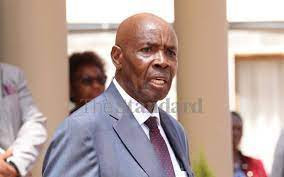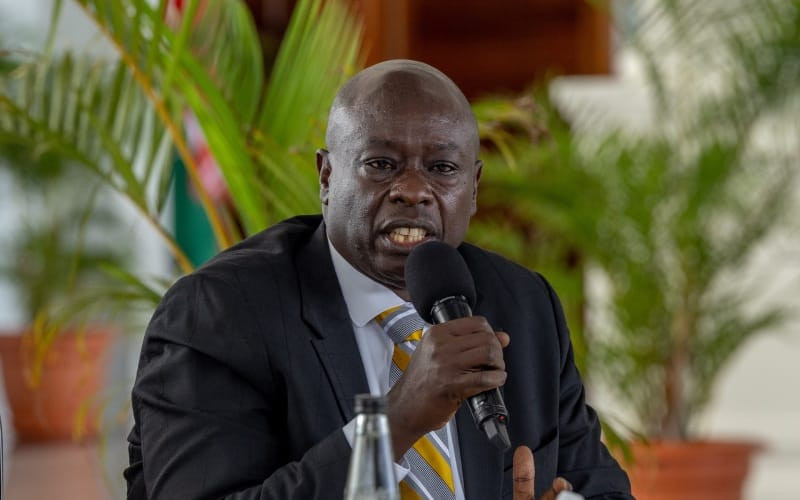Nairobi-based painter and sculptor Michael Soi is one of the leading artists in Kenya today. His paintings largely borrow on the cartoon form to provide satirical commentary on events shaping society.
One of his popular series of paintings is called China Loves Africa. It involves a colourful array of risqué paintings that summarise the largely negative global perception of the Asian nation’s 16-year dalliance with the continent.
But now, a new study by leading economist David Dollar is challenging this view of China’s involvement with Africa. It addresses key myths that have overshadowed international trade and foreign policy between the two regions for close to two decades.
In the paper China’s Engagement with Africa; From Natural Resources to Human Resources, Dr Dollar argues that China’s engagement with Africa is a win-win relationship for both regions.
However, he admits that the scale of the Asian Tiger’s investment in Africa has traditionally been exaggerated.
Growing influence
“In terms of realised Chinese investment in Africa, the amounts are significant enough to contribute to African growth, but not at the huge scale that some media coverage suggests,” he says.
“According to data from China’s Ministry of Commerce (MOFCOM), the stock of Chinese direct investment in Africa was $32 billion [Sh3.3 trillion] at the end of 2014. This would represent less than 5 per cent of the total stock of foreign investment on the continent.”
Dollar adds that even if one doubles this figure to account for China’s indirect investment through avenues like the Hong Kong financial markets or loans through the state-owned Export-Import Bank of China, the country’s share of overall investment remains modest.
“Chinese financing is substantial enough to contribute meaningfully to African investment and growth, but the notion that China has provided an overwhelming amount of finance and is buying up the whole continent is inaccurate,” he says.
Dollar is a senior fellow at the Brookings Institution, and served as the US Treasury’s economic and financial emissary to China from 2009 to 2013.
He leans on his role in facilitating policy dialogue between the two polar economies and 20-year World Bank experience in presenting his 125-page study.
China’s involvement with Africa since the turn of the millennium has been met with a mixture of watchful skepticism and praise by both the local and international community.
Some think tanks and economists have continually argued that China’s growing influence in Africa is causing a displacement effect on US investment and influence in the continent.
Data from the Kenya National Bureau of Statistics (KNBS) indicates that the Government’s outstanding debt owed to the US has reduced by an average of 6.7 per cent.
Stay informed. Subscribe to our newsletter
This is from Sh5.9 billion in the 2010-2011 financial year to Sh4.4 billion in the 2014-2015 year.
China, on the other hand, has seen its debt stock in Kenya jump from Sh32 billion in 2010-2011 to Sh252 billion in 2014-2015 – a cumulative 687 per cent surge.
KNBS states that the rise in Chinese bilateral debt is a result of infrastructure development projects like the Standard Gauge Railway, which is expected to cost about Sh372 billion.
AID MODEL
China has also faced criticism for turning a blind eye to human rights abuses by funding autocratic and corrupt regimes.
On her first official tour to Africa after taking the job of US Secretary of State, Hillary Clinton took an indirect swipe at the Asian nation, stating that the US aid model is based on partnership and not on extracting resources at the expense of democracy.
However, African leaders like President Uhuru Kenyatta and Uganda’s Yoweri Museveni have previously castigated the US for providing aid with strings attached aimed at maintaining a firm grip on the fortunes of the continent.
World Bank economists Apurva Sanghi and Dylan Johnson last year published a working paper titled Deal or No Deal: Strictly Business for China in Kenya? that sought to provide a detailed view of the value of China’s ties with Kenya.
The two economists echo the sentiments of Dollar’s research, stating that Kenya stands to benefit from dealing with China, but only if the country is able to spur its lagging manufacturing sector.
“China’s share of Kenya’s total imports has increased from 12 per cent of Kenya’s imports in 2012 to 23 per cent in 2014.”
The study goes on to state that: “Kenyan consumers benefit thanks to a larger quantity of cheap Chinese products in the market.
“From 2012 to 2014, consumers enjoyed a 10 per cent lower unit price on manufactured goods, and a 7 per cent lower unit price on chemicals.”
Kenyan manufacturers and contractors might, however, not be too pleased by the influence of China in the local market.
As Beijing continues to finance the country’s mega infrastructure projects, Kenyan contractors are losing out and slowly being driven out of business.
“Chinese financing of infrastructure has also enabled Chinese construction companies to assert their presence on the continent, with evidence suggesting that Chinese companies have become highly competitive, crowding out African construction companies,” states the World Bank economists.
African countries are said to be making a trade off between getting projects completed quickly and cheaply on one hand, and facilitating the long-term development of a local construction industry on the other. This is complicated by the influx of Chinese workers who initially move for work but stay on.
The number of Chinese workers in Africa is said to be disproportionately high when compared to the amount of financing China has provided, and compared to migrants from other countries.
So while Chinese workers bring skills and entrepreneurship, their large numbers limit African workers’ opportunities for jobs.
“One of the major failings of the SGR project is the near exclusion of local suppliers,” said Sanghi and Johnson.
“Local manufacturers were only able to supply cement and a negligible amount of steel to SGR; contractors imported the rest of the materials from China. Local manufacturers missed a valuable opportunity for capacity building, knowledge sharing and long-term job creation.”
Ultimately, whether Kenya gains or loses in its bilateral relationship with China depends on what Kenya does with its fledgling manufacturing sector.
DEMAND SLUMP
China is moving away from the resource-driven growth that determined its trade policy the past three decades. The country no longer has the demand for minerals like copper and iron that built its manufacturing epoch.
This has already caused a slump in demand for African commodities, dragging the continent’s average GDP growth to a 20-year low, with the economies of resource-dependent countries like Angola, Nigeria and South Africa hit hard.
Dollar argues that the effects are likely to be permanent as China enters the next chapter of growth that will see it demand less energy and commodities. This shift is likely to “have long-term effects on commodity prices and commodity trade volumes”.
Thus, as Kenya prepares the first batch of oil exports that will put the country in the league of oil-producing nations later this year, economists say the key to inclusive economic growth lies in building the country’s manufacturing and tradeable services exports.
China’s working-age has peaked, and improved living standards and wages means more Chinese firms will be outsourcing manufacturing and services to lower-wage areas.
With more than 50 per cent of Africans under the age of 20, Africa’s demographic dividend is said to be equal to China’s at the turn of the century, and could make the continent an outpost of manufacturing and tradeable services.
[email protected]
 The Standard Group Plc is a
multi-media organization with investments in media platforms spanning newspaper
print operations, television, radio broadcasting, digital and online services. The
Standard Group is recognized as a leading multi-media house in Kenya with a key
influence in matters of national and international interest.
The Standard Group Plc is a
multi-media organization with investments in media platforms spanning newspaper
print operations, television, radio broadcasting, digital and online services. The
Standard Group is recognized as a leading multi-media house in Kenya with a key
influence in matters of national and international interest.
 The Standard Group Plc is a
multi-media organization with investments in media platforms spanning newspaper
print operations, television, radio broadcasting, digital and online services. The
Standard Group is recognized as a leading multi-media house in Kenya with a key
influence in matters of national and international interest.
The Standard Group Plc is a
multi-media organization with investments in media platforms spanning newspaper
print operations, television, radio broadcasting, digital and online services. The
Standard Group is recognized as a leading multi-media house in Kenya with a key
influence in matters of national and international interest.










